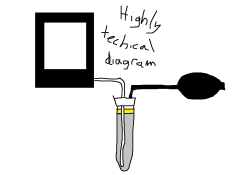ThePhotoChemist
Member
Hey everyone. Here's a video I slapped together about a plate holder that I slapped together. I was able to make a fairly effective mirror out of galinstan instead of mercury -- but cleaning it off is a whole other problem.
I think next I'm going to try making the holder anaerobic - either by flushing nitrogen, or by filling the thing with mineral oil. I'd be interested in hearing any thoughts you all may have.
I think next I'm going to try making the holder anaerobic - either by flushing nitrogen, or by filling the thing with mineral oil. I'd be interested in hearing any thoughts you all may have.












